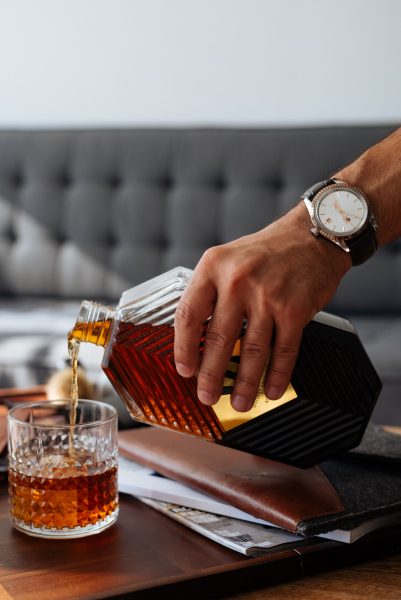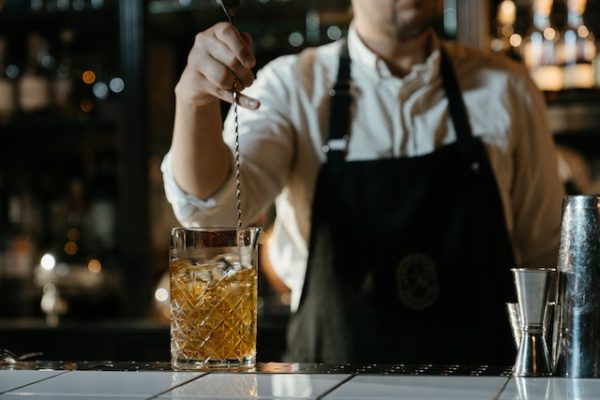Whisky has a history that is centuries old, with the first batch originating in either Scotland or Ireland back in the early 1000s AD. Back then it was simply enjoyed as is with no frills or fuss but around the mid-1800s the first cocktail (ever!) was made in New Orleans using whisky as one of the main ingredients.

Today, it is quite commonplace to use whisky in various forms of cocktails alongside other liquors like vermouth and amaro as well as mixers like bitters and juices. If you’re a whisky lover or connoisseur, you will want to maximize the use of your collection by combining it with flavourful cocktails. In this post, we’ll be giving a crash course on what tools you need and what pairings are tried and true so you can become an at-home mixologist. Explore the possibilities of mixing with whisky, including options like a 12-year-old malt whisky, to craft exquisite cocktails that will delight your palate.

Essential Cocktail-Making Tools
No matter what ingredients or techniques you’ll be using, there are some tools that every cocktail maker needs in their arsenal:
- Jigger: Yes, cocktail making can be about creativity, but it also has scientific elements. A little bit too much or too little of one thing can ruin the entire creation. This is where a jigger comes in to help with precision as it is a handy measurement tool. Jiggers come in various sizes, such as single versus double jiggers, and styles such as Japanese jiggers, classic jiggers, OXO double jiggers, and more.
- Shaker: A shaker is what you think of when you see a bartender mixing a concoction behind the bar a la Tom Cruise. It helps combine all of the ingredients as well as can help cool the drink down. The two most common shaker styles you’ll find are the more versatile Boston Shaker and the traditional Cobbler Cocktail Shaker.
- Strainer: When you’ve mixed your ingredients together, you need to pour it through a strainer to get rid of the ice and other solid ingredients (like fruit pulp and pips). Sometimes a shaker will include a strainer inside but not always. The most used strainer is a Hawthorne strainer which you place on top of the glass you will be using and then pour the mixture through it. Some people even prefer to use an additional finer strainer on top of that to eliminate finer “floaters” that may have been left behind but ultimately it’s about personal preference.
- Muddler: For certain cocktails, you may need a muddler to process herbs and such. Muddling uses a technique that awakens the herbs so as to really bring out the flavours as opposed to crushing them, which can influence the taste of a cocktail negatively.
- Bar spoon: This is obviously not the same as your everyday kitchen spoon but is a metal spoon with a long and spiral handle. It is used to stir drinks effectively and the long spiral handle is so you can pour the drink along the spiral to create layers.
- Citrus peeler or zester: If you’re planning on using citrus fruits of any kind inside your cocktails or as a garnish, a peeler or zester is a must-have. This helps you to get a nice peel swirl or to get the skin nice and fine to infuse the citrus flavours properly into the drink.
Crafting the Perfect Whisky-Based Cocktails
- Balance is key: Every cocktail needs four components: a base, a modifier, an accent, and dilution. You need to balance these elements correctly to make the perfect drink. The base spirit is what you center all other components around (that would be your whisky in this case). The modifier smoothens the taste of the base spirit so it will be things like Vermouth or liqueurs. The accent is a pop of flavour and colour like syrups or fresh herbs. Finally, the dilution is the finishing touch and usually includes ice, club soda, tonics, and so forth.
- Choosing the right whisky type: Each whisky type has a distinct essence. For example, bourbons tend to have a sweeter flavour and there are whiskies that can be spicy or fruity.
- Experiment with bitters: Bitters are often referred to as the “spice rack” of the cocktail industry. A single dash of bitters can completely change the flavor and complexity of a whisky cocktail. Choose from aromatic, orange, chocolate bitters, and more.
- Quality Ice: Large, high-quality ice cubes or spheres can properly chill your cocktail without diluting it too much. You can even infuse the ice with complementary flavours.
- Garnish Thoughtfully: Garnishes serve a dual purpose. It enhances the visual appeal and contributes to the overall aroma. Think of edible flowers, fresh herbs, and citrus twists. You can even add spices like star anise or cinnamon pods.
Unique Combinations
- Smoky elements: Smoked ingredients can add a layer of complexity. You can include smoked salt, smoked ice cubes, or even smoked fruits.
- Infused syrups: Create your own flavored syrups by infusing simple syrup with ingredients like lavender, cinnamon, or ginger.
- Liqueurs: Explore liqueurs that you wouldn’t usually consider such as chartreuse, absinthe, or amaro as these can bring herbal and bitter notes to balance out other elements.
- Tea and coffee: Add tea (like chamomile) to your cocktail or cold-brew coffee. Just be careful with coffee as it can be an overpowering taste and might disguise the flavors of the other ingredients that you want to highlight.
- Spices: Star anise, cardamom, or saffron can transform any cocktail. A little goes a long way, so start with a small amount and adjust to taste.
- Fruit purees: Purees made from fresh fruits like peach, mango, or blackberry can add natural sweetness and a burst of fruity flavor to your whisky cocktails. They work well in whisky sours and old fashioned.
In conclusion
Making whisky cocktails at home is a great way to get creative and thoroughly utilize your whisky collection. By learning the basics, investing in the right type of equipment, and adding some special ingredients, you can become a seasoned mixologist in the comfort of your own home.

